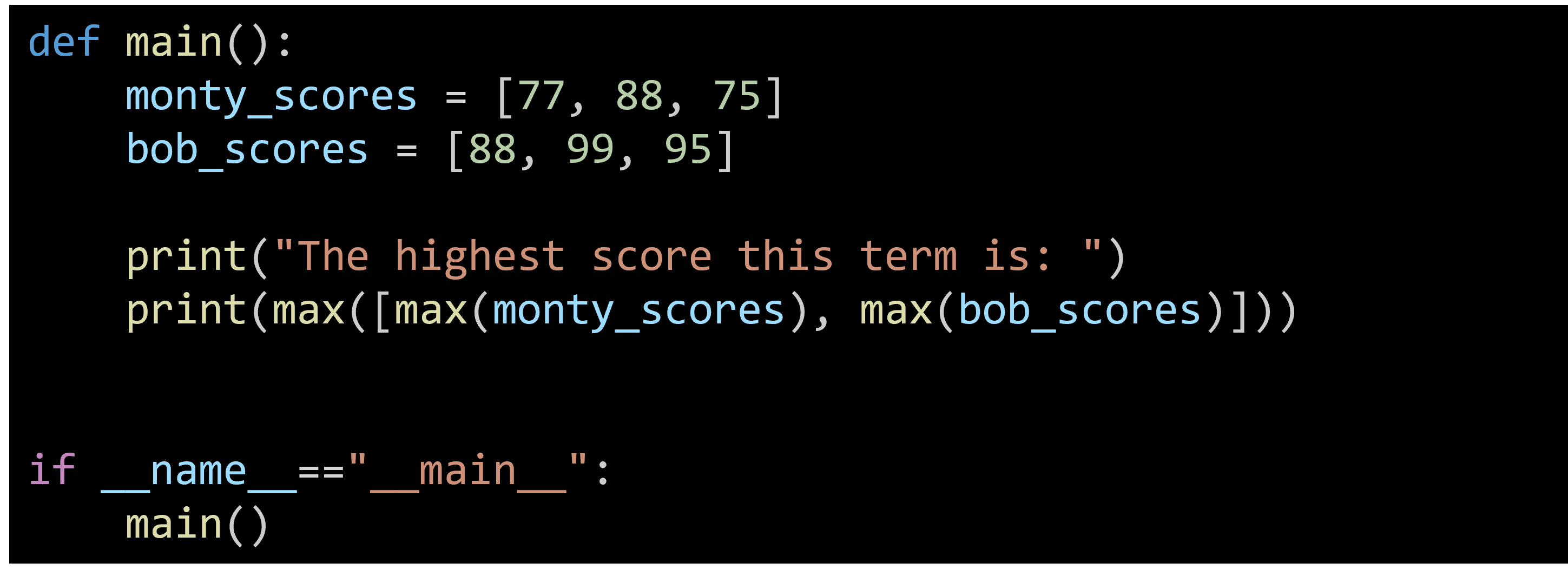Nesting function calls is a common technique in Python and many other programming languages. It allows you to combine multiple function calls into a more concise and organized structure. This involves placing a function call within the argument list of another function call, so that the result of the inner call is used as an argument for the outer call.
Example: Finding the Maximum Score

Output:
![]()
Explanation:
- Individual Max Calculations:
- max(monty_scores) calculates the maximum value in monty_scores, which is [77, 88, 75]. The result is 88.
- max(bob_scores) calculates the maximum value in bob_scores, which is [88, 99, 95]. The result is 99.
- Creating a New List:
- A new list is created with the results of the previous max calculations: [88, 99].
- Outer Max Calculation:
- max([88, 99]) calculates the maximum value in the new list, which is 99.
- Print Statement:
- The result of max([88, 99]), which is 99, is passed to the print function and printed.
Advantages of Nesting
- Conciseness: Nesting reduces the number of intermediate variables and makes the code more concise.
- Readability: For experienced programmers, nested calls can be more readable as they reduce clutter.
- Efficiency: By avoiding temporary variables, nesting can sometimes improve the efficiency of the code.